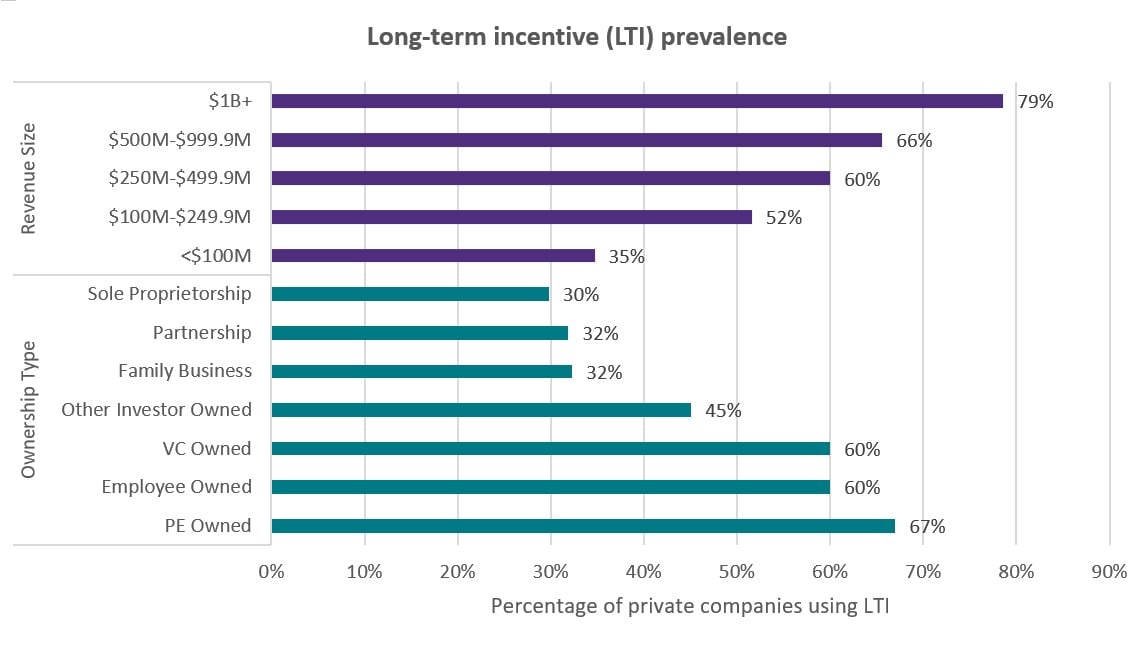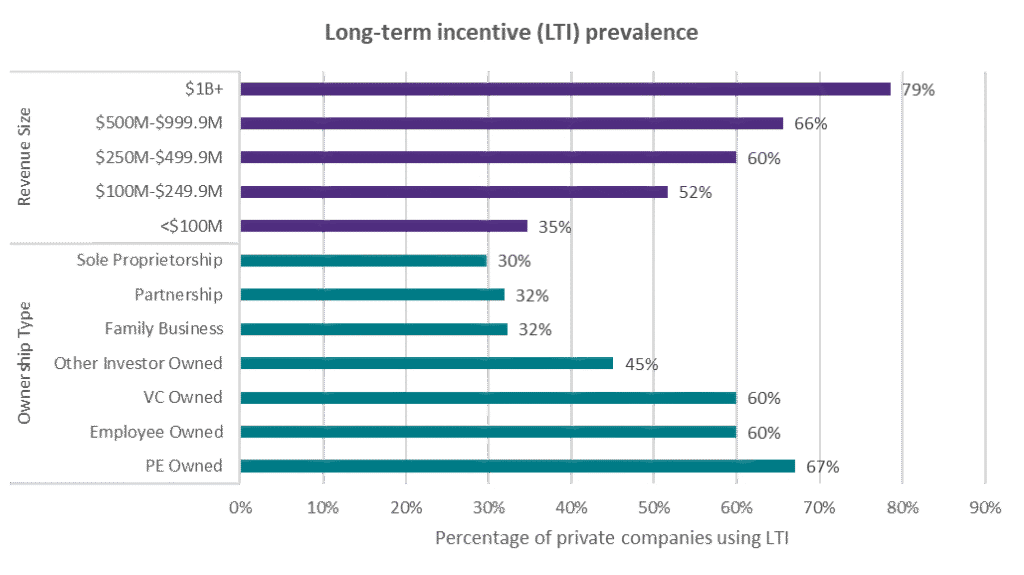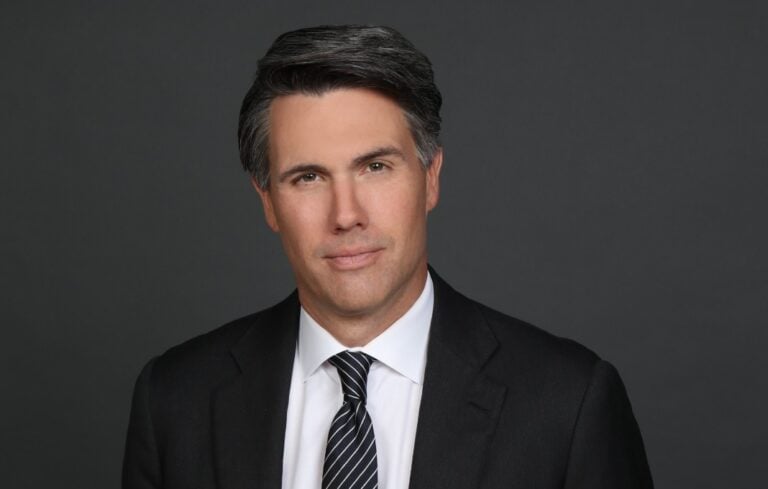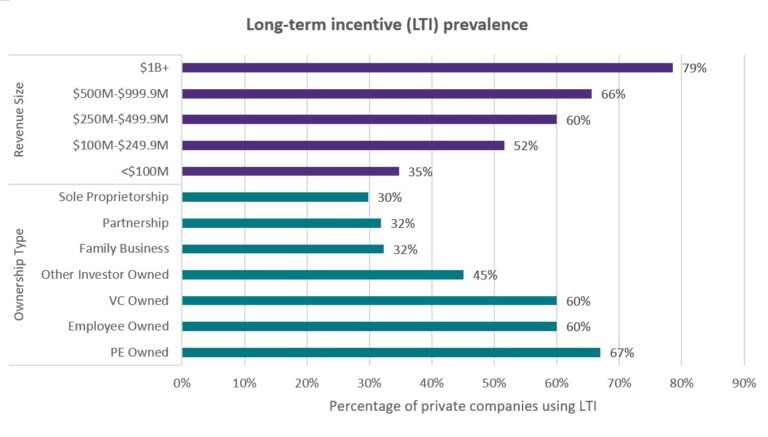
Most Private Companies Now Use LTIs—Here’s How To Get Yours Right


Recent data from Chief Executive Group’s CEO & Senior Executive Compensation Report for Private U.S. Companies finds that formal long-term incentive plans (LTIPs) have become majority practice (>50 percent) at companies with $100 million or more in revenue—only increasing in prevalence beyond that threshold to nearly 80 percent among the largest group of private companies ($1 billion + in revenue).
The research finds that long-term incentive use is more prevalent among certain ownership types. Private equity and venture-backed companies, where LTI’s are considered table stakes for senior management, tend to use them to influence decision-making and behaviors that drive company value ahead of a near-term exit or financing event. In contrast, family-owned or closely held private companies are less likely to use LTIs, as these businesses often focus on a more distant time horizon such as pure valuation growth or generational wealth creation.

But regardless of these unique circumstances, CEOs play a key role in shaping their company’s compensation programs and how the executive team should be rewarded for delivering the desired results and behaviors. In fact, for many private companies, it is senior management who drives the initial adoption of a long-term incentive program. That’s because CEOs and top senior executives tend to be the first to recognize concerns related to attracting and retaining key talent.
But as private companies explore the value of LTIs, we have found that a common set of strategic debates often emerges, putting the plan at risk if left unaddressed. Here are four conversations senior management teams need to have with their board before implementing an LTI component to their executive program:
If these conversations open the path to LTI implementation, we recommend boards and leadership teams follow the following three steps, generally up to six months prior to the effective date of a future LTI award:
These steps will help lay the groundwork for a robust, strategically aligned LTI ready for rollout in the upcoming fiscal year.



0

1:00 - 5:00 pm
Over 70% of Executives Surveyed Agree: Many Strategic Planning Efforts Lack Systematic Approach Tips for Enhancing Your Strategic Planning Process
Executives expressed frustration with their current strategic planning process. Issues include:
Steve Rutan and Denise Harrison have put together an afternoon workshop that will provide the tools you need to address these concerns. They have worked with hundreds of executives to develop a systematic approach that will enable your team to make better decisions during strategic planning. Steve and Denise will walk you through exercises for prioritizing your lists and steps that will reset and reinvigorate your process. This will be a hands-on workshop that will enable you to think about your business as you use the tools that are being presented. If you are ready for a Strategic Planning tune-up, select this workshop in your registration form. The additional fee of $695 will be added to your total.

2:00 - 5:00 pm
Female leaders face the same issues all leaders do, but they often face additional challenges too. In this peer session, we will facilitate a discussion of best practices and how to overcome common barriers to help women leaders be more effective within and outside their organizations.
Limited space available.

10:30 - 5:00 pm
General’s Retreat at Hermitage Golf Course
Sponsored by UBS
General’s Retreat, built in 1986 with architect Gary Roger Baird, has been voted the “Best Golf Course in Nashville” and is a “must play” when visiting the Nashville, Tennessee area. With the beautiful setting along the Cumberland River, golfers of all capabilities will thoroughly enjoy the golf, scenery and hospitality.
The golf outing fee includes transportation to and from the hotel, greens/cart fees, use of practice facilities, and boxed lunch. The bus will leave the hotel at 10:30 am for a noon shotgun start and return to the hotel after the cocktail reception following the completion of the round.